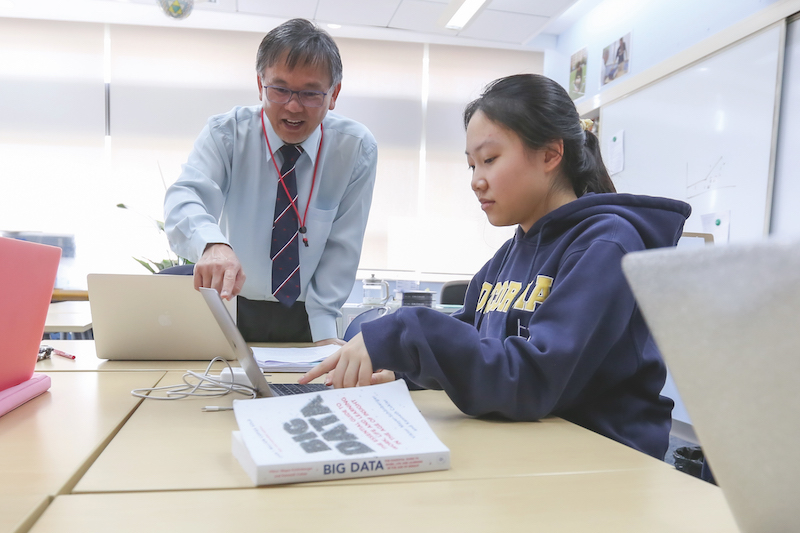Big data at Concordia: Helping students see into the future
Posted on 7th Sep 2021 in School News, China
By Katherine Da, Concordia International School Shanghai Class of 2021
Intelligent and passionate, Dr. Peter Tong, Concordia International School Shanghai’s Honors Pre-Calculus, Multivariable Calculus, Aerospace, and Applied Learning Big Data teacher, offers an enthusiastic welcome and nudges aside a pile of graded homework assignments. With his open and friendly persona, he launches into his personal story of big data analytics.
Dr. Tong first heard about “big data” when he was a graduate student in Australia in 2003. As someone who has always been extremely passionate about finding the inherent patterns in mathematics and beyond, he was immediately drawn to this new discipline.
During this semester-long applied learning course, Big Data students receive a crash course in data analytics before focusing on a capstone project that they are given free rein to choose the topic of. This project-based curriculum requires students to delve deep into their topic through research and analysis.
While he does point out that the course encourages development of great additional skills and experience that often catch the eye of university admission officers, Dr. Tong’s overarching goal for the course is to let students “gain an overall appreciation for the potential in data and to use the skill in looking for patterns to see what else these pieces of information can lead to. It’s almost like a philosophy.”
One student, Samuel X., who took the course as a high school senior, based his Big Data capstone project on analyzing political biases in news. He later came back to Tong’s office with exciting updates on the expansion of his project: during summer, Samuel completed a full research paper to IEEE standards on the use of natural language processing in discerning journalism’s political biases — and he won second place for his presentation at YouthMaker Science and Technology Fair. Recounting this story, Dr. Tong is jubilant: “It’s not even just about the award itself, but the fact that he took the initiative to use what the course taught him and take it so many steps forward that impresses me,” he says.
The Big Data course provides the opportunity for students to present their ideas at the annual ICBDE (International Conference on Big Data and Education). Since the course’s creation, a growing number of Concordia students have been selected for attendance at this and other conferences previously only designated for graduate-level research.
In fact, one student group went as far as to win the Excellent Presentations award at ICBDE two years ago. Drawing inspiration from the school’s AQI monitoring practices, the group began analyzing VOC, CO2, and pm2.5 data collected from hardware they built themselves with the help of Concordia AP Physics teacher, Mr. Joel Klammer. Their analysis of the resulting data was then used by the director of operations at the school to better inform the fresh air intake cycle method.
At one point during the conference, Professor Jin Wang, the program chair of ICBDE, approached Tong to express his utter amazement at the academic and social caliber of Concordia students. Dr. Tong recalls that what really stood out to Chairman Wang was the fact that they are high schoolers doing projects that are at the university standard, with presentation skills that were at par with, if not better than, some of the undergraduates.
“A diamond in its raw form is worth really little,” says Dr. Tong. “If I walk into a mine, I wouldn’t know if I stepped on one. But when the diamond is polished, cut, and packaged in a nice manner, only then would you realize its true worth,” he explains. “The same thing goes for data. Unless you data-wrangle it, you would not be able to extract its full value.” In our world today, “data is the new oil and natural resource.”
The key, Dr. Tong believes, is in being able to leverage this growing resource to explore new possibilities.
This article first appeared in the 2021/22 edition of John Catt's Guide to International Schools, which you can read here: